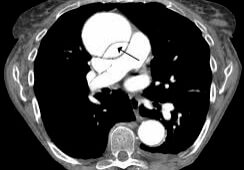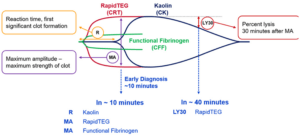Discovery yields answers for family with thoracic aortic aneurysm and dissection
A new finding by clinicians and geneticists may solve a medical mystery that one family has faced for the last 15 years and help identify the cause of a rare aortic disease in other patients as well. Through genetic analysis of a family with a history of thoracic aortic aneurysm and dissection (TAAD), investigators at Brigham and Women’s Hospital and Washington University School of Medicine in St. Louis have identified mutations in the LOX gene, a gene associated with the integrity of the arterial wall, in human subjects for the first time. Strong evidence from a mouse model of the disease further confirms these mutations as a cause of aortic disease, and, together, the results point toward possible strategies for managing this inherited form of TAAD. The new findings are published online this week in The Proceedings of the National Academy of Sciences.
“This discovery demonstrates that it’s possible for clinical research to have a big impact on diagnostics for patients with undiagnosed disease and influence the clinical management of patients and family members,” said study author Dana Vuzman, PhD, co-director of the Brigham Genomic Medicine Program.
TAAD is a relatively rare condition (affecting about 15,000 people in the U.S. each year) in which the walls of the aorta, which carries blood from the heart to the rest of the body, become weakened. As blood is pumped through, the aorta may bulge, causing an aneurysm, or tear, causing a dissection and life-threatening internal bleeding. Certain risk factors – such as smoking, age and weight gain – can increase a person’s risk for TAAD, but in some cases, TAAD is caused by an underlying genetic condition, such as Marfan syndrome (a connective tissue disease) and can occur when a patient is young.
In the case of the family examined by the Brigham Genomic Medicine Program (BGMP), the primary patient tested negative for the genetic mutations that cause Marfan syndrome as well as all other mutations known to cause TAAD. In November 2013, BGMP performed whole-genome sequencing on two first cousins in the family with TAAD to identify a causal gene.
The study’s senior author, Nathan O. Stitziel, MD, PhD, a cardiologist and Assistant Professor of Medicine and Genetics at Washington University in St. Louis, performed the co-segregation analysis (comparing genetic mutations shared and not shared by family members with and without the disease) that identified seven candidate mutations, including a mutation in the gene for lysyl oxidase (LOX), an enzyme that links collagen and elastin—two structural components that comprise the arterial wall.
Stitziel then developed a collaboration with Robert P. Mecham, PhD, a Professor of Cell Biology and Physiology at Washington University in St. Louis to use CRISPR/Cas9 to replicate the same LOX mutation in mice. The Washington University investigators showed that mice with two copies of the mutated gene died of aortic rupture. Mice with one copy of the gene showed evidence of disrupted collagen and elastin fibers.
“We took advantage of CRISPR/Cas9 technology to study the effects of this specific mutation,” said Stitziel. “We now have an animal model where we can test therapies relevant to this form of TAAD and understand the behavior of this enzyme in a very specific model of a human disease.”
The LOX gene has another property of great interest to the research team: it’s known to bind copper. The family’s mutation may mean that they do not bind copper well. Clinicians and researchers will work together to evaluate possible treatment opportunities based on this insight, including whether supplementing copper in the diet could change risk for those who carry the mutation. They are also following up on next steps to add LOX to the panel of genes that are tested when an inherited form of TAAD is suspected.
“When we found this causal gene and were able to reveal it to the family, it was an emotional moment,” said Natasha Frank, MD, the clinical geneticist at BWH who treated several members of the family. “Using genetic sequencing, we were able to answer the kind of question that hasn’t been possible to address before and potentially change the lives of family members who can now be tested for mutations in this gene.”
 Explore further: Discovery of new genetic mutation in aortic disease allows better diagnosis
Explore further: Discovery of new genetic mutation in aortic disease allows better diagnosis
More information: Loss of function mutation in LOX causes thoracic aortic aneurysm and dissection in humans, www.pnas.org/cgi/doi/10.1073/pnas.1601442113
Journal reference: Proceedings of the National Academy of Sciences 

Provided by: Brigham and Women’s Hospital 

Content retrieved from: http://medicalxpress.com/news/2016-07-discovery-yields-family-thoracic-aortic.html.





